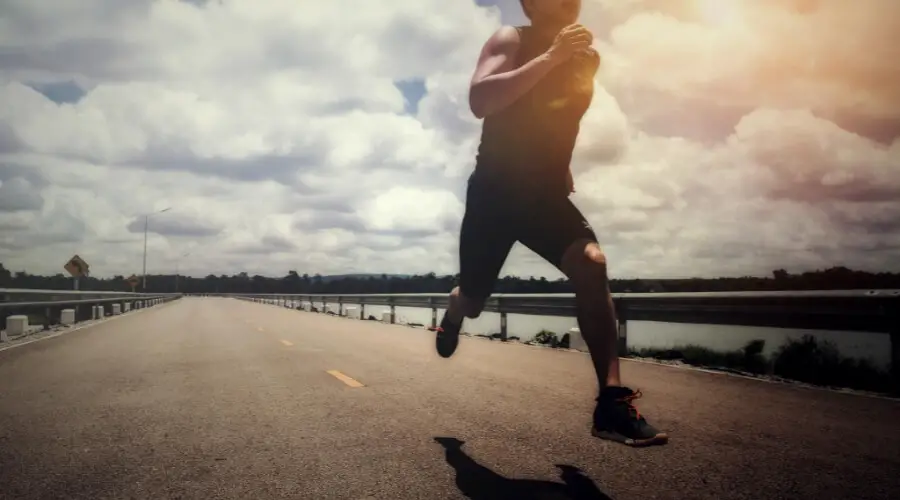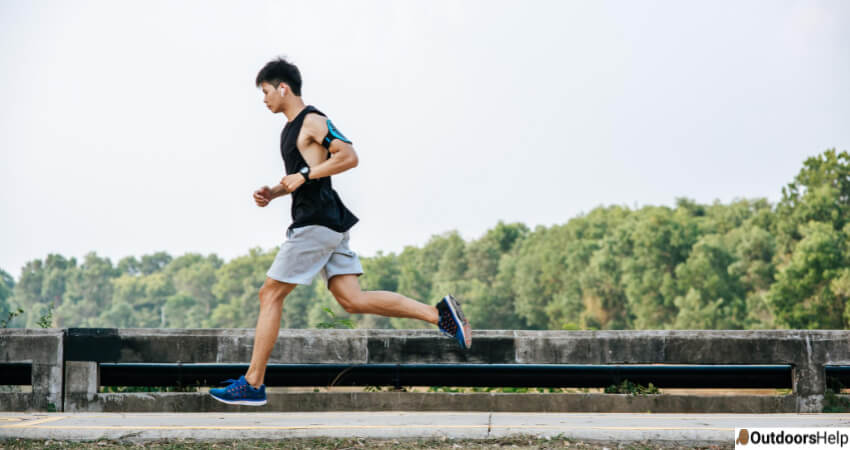Running on asphalt is not bad as long as the trail is safe. Compared to concrete, asphalt is better since it is a bit softer and manageable on the body. Therefore, when running on a hard surface, you should opt for asphalt roads, if possible, instead of concrete. The surface is consistent and uniform, thus, making it suitable for a speed workout. Picking up your pace is easier when you do not have to think about where you will be placing your steps constantly. Asphalt’s flat surface also doesn’t put a lot of stress on the Achilles tendon.
Moreover, asphalt pavements are usually mapped; hence, easy for runners to track their mileage using a running app. Asphalt is not without some drawbacks, especially how it jolts the runner’s joints. One must also take care when running on asphalt to avoid traffic and potholes.
Should You Run On Asphalt Or Concrete?

There are several types of surfaces that runners run on, including grass, tartan track, smooth gravel, asphalt, or concrete. Marathon runners take as many as 49,000 steps; therefore, there are a lot of pounds of pressure for every square inch jamming up through their ankles, knees, hips, and lower back.
You must run on a smooth and flat surface for better performance. Nonetheless, if you are running on the highway or street, you should ensure you stay at the center of the road where streets are more even and avoid the gutter where the surface is somewhat slanted for water runoff. It may be impossible to run in the middle of a road, but you can find a route where you will run on a flat surface.
It is better to run on asphalt than on concrete but not on slated surfaces as you may risk injuries or blisters. If asphalt is unavailable, consider running on a dirt path, grass, or bike path. Also, remember that running on slated surfaces may also cause your shoes to get worn out fast.
How Do Running Surfaces Affect The Body?
Runners need to vary their running surfaces. Depending on the type of mileage or surface you prefer running on, repeating the same thing repeatedly leads to overuse injuries and muscle stagnation.
As you run, your muscles and tendons absorb the shock of your feet when landing, and during the push-off stage, they release that energy. Your shoes and the running surface can help in absorbing and releasing energy. Your body takes your previous strides information then adjusts muscle contractions before you make your next step on the ground. This means that your body pre-tunes your muscles before making the first step on a new surface.
It’s important to change up your running surface frequently to challenge your muscles differently and add novelty to the running routine. Some of the best surfaces that reduce impact force with the runner’s stride include grass, dirt, and gravel surfaces. The surfaces may also allow faster recovery after a workout.
Different Types Of Running Surfaces

Cement Or Concrete
Most sidewalks are made of concrete. These surfaces are pretty convenient and safer than city roads. Nonetheless, concrete surfaces are very tough on the muscles and joints, especially the knees and ankles.
Asphalt
Asphalt is a mixture of gravel, tar, and crushed rock. Many roads are made of asphalt, and also most road races are run on the surface. Asphalt is better to run on than concrete as it is much stable. However, you may run a risk of a cambered and sloped shoulder that may throw your body out of alignment. While running on asphalt, you should be wary of potholes and traffic safety.
Brick
Brick is usually seen on old roads and streets. The surface is tricky since it’s as hard as concrete and can be uneven, requiring you to take extra caution to your foot placement to prevent tripping.
Gravel
Gravel is much easier on the body if well maintained. The downside of running on gravel is that they are not an all-weather surface; therefore, your footing stability might vary based on how wet the ground is. Before running on gravel, you should know that the rock size determines how comfortable you will be. If you run on large rocks, your body will need to do a lot of stabilization which may be tough on runners with ankle issues.
Dirt
A dirt surface is one of the best surfaces to run on as it is very gentle for the body. Nonetheless, a dirt trail may vary depending on the condition and incline. Some dirt surfaces may be muddy or impassable, while others may have hazards such as rocks or roots, increasing the risk of ankle sprains.
Wood Chips
Running on wood chips is easy and gentle on the body, especially well-maintained trails that aren’t wet or slippery.
Sand
Sand is the best surface for barefoot running as it fires up the stability muscles, which you don’t use quite often. Some sand surfaces may be uneven and unstable, thus putting added pressure on the runner’s knees, Achilles tendons, calves, hips, and ankles. For safe running, you should start gradually with low miles and work your way up until the body can handle it.
Grass
The grass is a soft natural surface suitable for runners with issues related to impact, such as bursitis. When running on grass, you should be wary of dangerous obstacles like holes, roots, and rocks hiding in the grass.
Treadmill
Treadmills are safe surfaces to run on as they have a cushioned belt that helps in reducing lower body impact. The benefit of running on treadmills is that the weather will not affect your workout since treadmills are found indoors. However, running on a treadmill can be monotonous, and transitioning back to road races may become challenging.
Conclusion
Hard-running surfaces result in greater impact forces exerted on your body, including the knees. Every step you make on a hard surface may lead to overuse injuries. Dirt and grass surfaces are better than asphalt, but asphalt is better than concrete. Therefore, you should be careful about the ground you run on to avoid the risk of knee and ankle pain.

